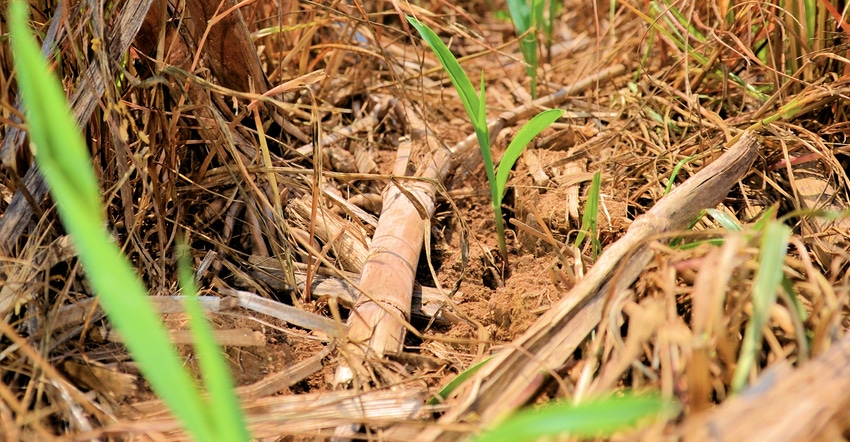October 24, 2017

Cereal rye cover crops give some weed suppression — an allelopathic effect. But cereal rye also may be wrongly blamed for slowing down early corn growth — sometimes misdiagnosed as allelopathy.
Using a cover crop to retard weed seed germination is a clear benefit. But if that same process also negatively affects our cash crop, we need to understand how to manage around it.
Pigweed, lambsquarters, purslane and crabgrass are most susceptible to cereal rye’s allelopathic effect. All are small-seeded, and suppression can last several weeks in a no-till situation. But the effects are limited to seeds on or near the soil surface. Those allelopathy chemicals from cereal rye don’t reach very deep where some weed seeds germinate.
Misdiagnosis of lethargic corn
Corn is a large seed and relatively unaffected by allelopathy. It’s planted around 2 inches deep — below where allelopathic chemicals typically reach. But slow-growing “yellow” corn, especially planted early into a terminated cereal rye cover crop, is common.
Minimum-till or no-till soils typically are a little cooler than conventionally tilled ground, so early seedling growth may be affected by that. That’s why many diagnose it as allelopathy.
N ‘missing in action’
Cereal rye essentially takes up all available nitrogen by termination time before planting corn. So it’s paramount that N is placed very near the corn seed at planting. An N form that doesn’t inhibit corn germination can be placed in-furrow. Pay particular attention to low-salt nitrogen fertilizers, products such as 9-18-9 and 3-18-18.
Since my soils are high in phosphorus, I haven’t found a benefit from traditional starter fertilizers. I use biological stimulants. I add 1 gallon of 28% nitrogen, plus water to apply a total of 4 gallons per acre through Keeton seed firmers. And 25 gallons of 28% nitrogen is placed 3 inches to the side of the corn row.
Some farmers prefer to broadcast N to get it quickly available to the corn seedling. Regardless of how it’s applied, it needs to be immediately accessible to the very young corn plant.
Cereal rye eventually gives some of the nitrogen back. But it’ll be near the end of the corn growth period. I’ve often heard farmers say that their corn planted into cereal rye was their best-looking corn by mid-summer. That late N release back into the soil gave the crop a needed boost.
The coach’s closer
Understanding allelopathy helps you manage it for your benefit. Some small-seeded weed control is probable. With proper nitrogen management in corn planted after cereal rye, “yellow” corn may be a thing of the past.
Groff is a cover crop pioneer and innovator who farms on the Chesapeake Bay watershed. Check out his website, covercropcoaching.com.
About the Author(s)
You May Also Like




